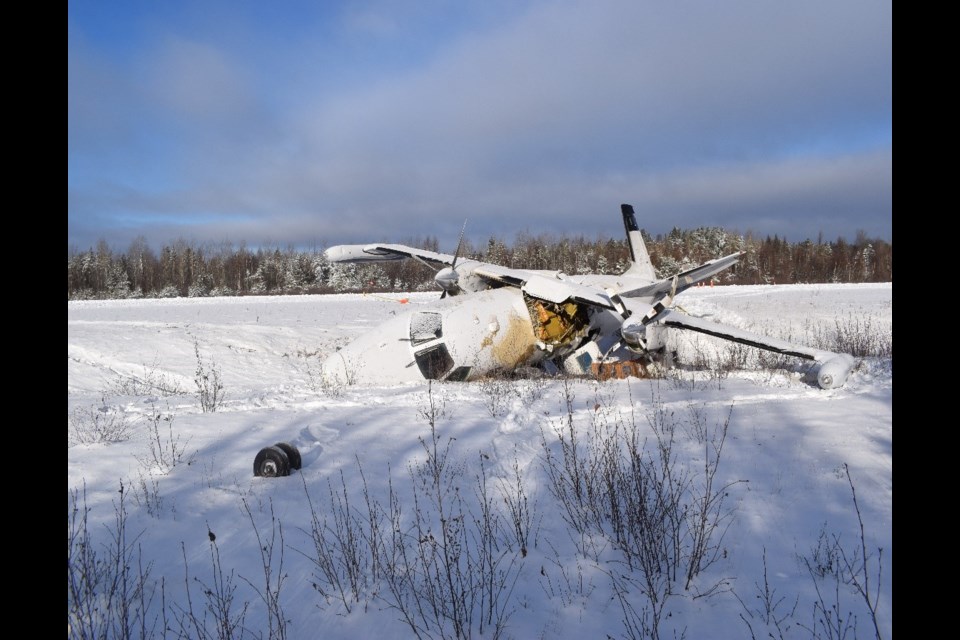WAWA – The Transportation Safety Board of Canada (TSB) has officially concluded their investigation into the plane crash at the Wawa airport on Nov. 27, 2023.
The Mitsubishi MU-2B-60 aircraft took off from Thunder Bay International Airport in the early morning and touched down at Wawa Aerodrome with two flight crew members and one medic on board.
According to Ken Webster, regional manager of operations, a heavy snowfall the night before caused the aircraft to slide off the runway's edge and collide with a drainage ditch during its landing.
The aircraft sustained significant damage, but the occupants didn’t receive significant injuries.
In addition to the occurrence, the TSB also said the Wawa Aerodrome needs to improve its safety plan with additional staff training.
A sheer lack of communication between the flight crew and the airport on when runway three would have been plowed added to the cause of the crash. The report stated the flight crew was under the impression the runway was clear, but the runway crew planned to plow the snow later that morning.
"What we highlighted was that everybody involved in situations like this -- whether it's the airport operator or the airdrome operator, the pilots, the air carriers, air traffic control -- they all basically need to communicate with regards to the current snow conditions and weather conditions at any given airport at the time," Webster said.
“So when flight crews are departing, they need to make sure they're aware of the actual runway conditions before landing so that landing can be accomplished safely.”
In the investigation report, TSB said all snow plows were equipped with VHF radios, “but the drivers did not hear the flight crew’s calls, nor did they attempt to call the flight crew after seeing the aircraft on final approach.
"The garage and the terminal building also have VHF radios -- however, they do not have outdoor speakers for the radios. In addition, the terminal building does not always have staff inside because employees are often working outside.”
The report also references the Wawa Airport Manual, which states its policy for all staff to carry the aerodrome’s portable VHF aircraft radios
“The investigation determined that aerodrome staff do not regularly carry the radios with them when they are out of the building. At the time of the occurrence, none of the staff had a radio with them,” the report said.
Although Webster acknowledges the Mitsubishi MU-2B-60 aircraft incident could have been prevented, he is quick to confirm that the report is not assigning blame, but improving Wawa airport’s safety plan.
Webster believes it’s TSB's duty to highlight the inefficiency in the travel services policy so the company can improve its procedures and ensure fewer preventable accidents.
“When something like this happens, it's one of the things that we help to do -- kind of organize everybody together so that we can find out what the safety efficiencies are and people can make changes quickly in some cases.
"The operator in this case can make a change as to their procedures and airport operators also can make a change to their procedures as well in this case and can fix things rather quickly,” said Webster.
